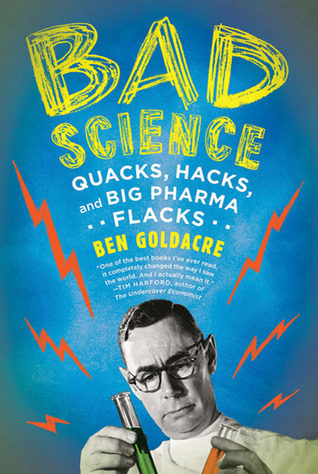More on this book
Community
Kindle Notes & Highlights
by
Ben Goldacre
Read between
August 6, 2021 - January 16, 2022
People I know still insist on buying brand-name painkillers. As you can imagine, I’ve spent half my life trying to explain to them why this is a waste of money, but in fact, the paradox of Branthwaite and Cooper’s experimental data is that they were right all along. Whatever pharmacology theory tells you, that brand-named version is better, and there’s just no getting away from it. Part of that might be the cost; a recent study looking at pain caused by electric shocks showed that a pain relief treatment was stronger when subjects were told it cost $2.50 than when they were told it cost 10
...more
Quesalid had proof of the fakery, he knew the trick as an insider and was all set to expose those who carried it out; but as part of his training he had to do a bit of clinical work, and he was summoned by a family “who had dreamed of him as their saviour” to see a patient in distress. He did the trick with the tuft and was appalled, humbled, and amazed to find that his patient got better. Although he continued to maintain a healthy skepticism about most of his colleagues, Quesalid, to his own surprise, perhaps, went on to have a long and productive career as a healer and shaman.
There’s also an important cultural context for this rush of activity that cannot be ignored: it was the tail end of the golden age of medicine. Before 1935 there weren’t too many effective treatments around: we had insulin, liver for iron-deficiency anemia, and morphine—a drug with superficial charm at least—but in many respects, doctors were fairly useless. Then suddenly, between about 1935 and 1975, science poured out a constant stream of miracles.
First of all, you need an idea for a drug. This can come from any number of places: a molecule in a plant, a receptor in the body that you think you can build a molecule to interface with, an old drug that you’ve tinkered with, and so on. This part of the story is extremely interesting, and I recommend doing a degree in it.
If you do have to compare your drug with one produced by a competitor—to save face or because a regulator demands it—you could try a sneaky underhand trick: use an inadequate dose of the competing drug, so that patients on it don’t do very well, or give a very high dose of the competing drug, so that patients experience lots of side effects, or give the competing drug in the wrong way (perhaps orally when it should be intravenous, and hope most readers don’t notice); or you could increase the dose of the competing drug much too quickly, so that the patients taking it get worse side effects.
This is more than cheeky. Doctors need reliable information if they are to make helpful and safe decisions about prescribing drugs to their patients. Depriving them of this information, and deceiving them, are a major moral crime. If I weren’t writing a light and humorous book about science right now, I would descend into gales of rage.
We see patterns where there is only random noise. We see causal relationships where there are none.
This is something humans are very good at—filtering irrelevant information—but that skill comes at a cost of ascribing disproportionate bias to some contextual data.
In the United States, you are currently having your own vaccine scare. Jim Carrey and friends appear regularly on TV and in the newspapers to tell the nation of their concerns on complex matters of epidemiology and immunology. Foreigners—let me tell you a secret—like to sneer at Americans sometimes, for their crude popular debate. This is not justified. In the U.K., our vaccine scare was epic. It is coming to a close, but in the hope that you can learn something from it (and because one of its leading figures, Dr. Andrew Wakefield, has now moved to Texas and become your problem) here is the
...more
Without anybody’s noticing, bullshit has become an extremely important public health issue,
There are intelligent people out there who want to be pushed, to keep their knowledge and passion for science alive, and neglecting them comes at a serious cost to society. Institutions have failed in this regard. The indulgent and well-financed “public engagement with science” community has been worse than useless, because it too is obsessed with taking the message to everyone, rarely offering stimulating content to the people who are already interested.


